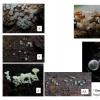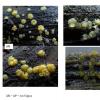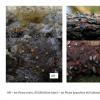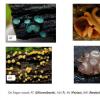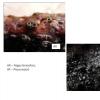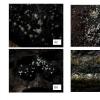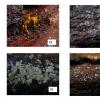
29-06-2011 11:14
 Alex Akulov
Alex Akulov
Dear friends.Yesterday evening I returned from a t

20-06-2011 18:40
En escama de un cono, de abeto ornamental. Hasta 2

29-06-2011 23:31
Bihain encore. Sur feuille morte de Populus tremul

29-06-2011 23:06
Bihain toujours, massif de massettes, sur gaines p

29-06-2011 13:46
Adrian CarterHello All;Two days ago I collected this on the und

28-06-2011 22:34
Bonsoir, Quelqu'un aurait-il une description séri

28-06-2011 14:54
 Peter Welt
Peter Welt
A friend of a fungus found Arpinia in Bosnia. See

22-06-2011 09:45
Bonjour,Quelqu'un posséderait-il ces quelques pag
 Dear friends.
Dear friends.Yesterday evening I returned from a two-week expedition to the Natural Reserves and National Parks of the Ukrainian Carpathians. At this time there is very wet and cool, so a lot of diverse discomycetes presented. I've never seen such an abundance of them - every collected piece of substrate was covered with fruit-bodies!
Every day I thought about how it would be nice if you were there also. I plan to visit Carpathians regularly, so if someone wants to join the trip - you're welcome.
To share with you the first impressions from the trip, I spread hastily made a selection of photos of some the most common species.
Friendly,
Alex.

I tried to give some hints on your specimens. Of course, microscopy would be necessary in every case. There are surely some interesting and rarely seen taxa among them.
Zotto
G-H = Capitotricha fagiseda nom. prov.
J = Capitotricha bicolor (on Rubus is C. rubi)
Q-T, W = ?Orbilia or Hyalorbilia
X, Z, ?AB-AC = Lachnum spp.
AA = Olla scrupulosa
AD-AG = Orbilia leucostigma (= O. delicatula/O. xanthostigma)
AH too low resolution
AL = ?Brunnipila
AN-AO = ?Orbilia
AR = ?Sarea resinae
AU = ?Pezicula
AW = Neobulgaria / Ombrophila pura
?
nice finds!
AN-AO looks like Mollisia to me, maybe M. ventosa since the substrate seems to be very moist. AZ-BC reminds me of Polydesmia pruinosa growing on old pyrenomycetes. AS could be Colpoma. AU looks a bit like Bactridium flavum.
Best wishes,
Gernot

quite some impression, it looks very tempting to go there with a microscope to study things in living state.
To add a suggestion to your list
AS ? Colpoma juniperi
Best Wishes,
Stip
Glad to see the travel was worth it for mycology! Beautiful species you found there.
Cheers - LUC.







